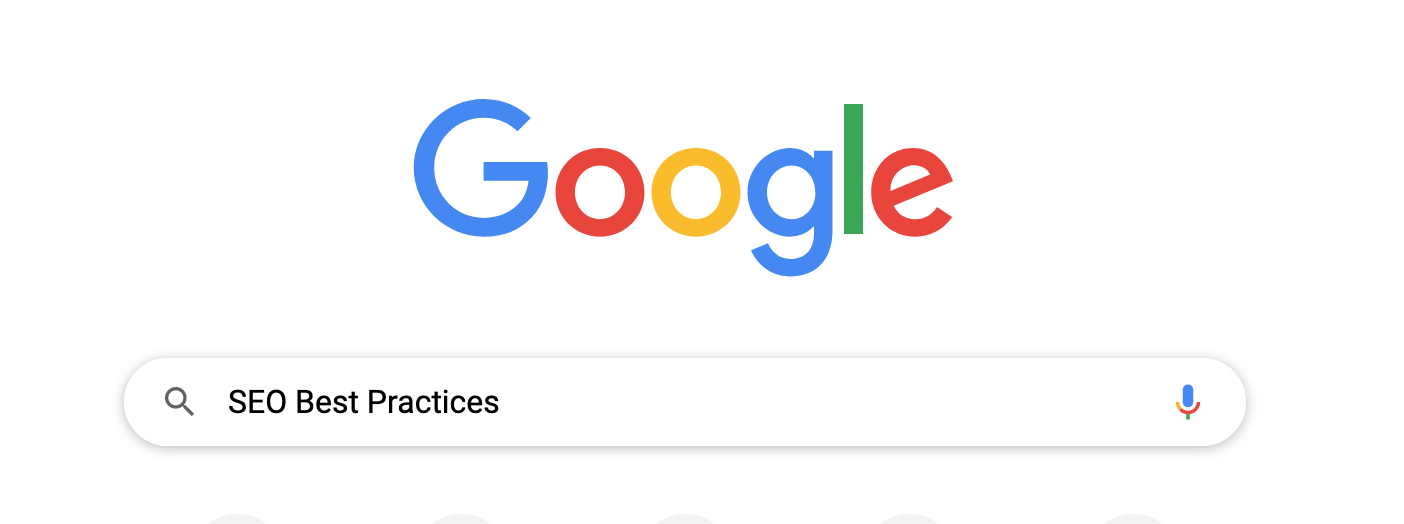Developing strategic meta tags using appropriate SEO protocol.
by Kimberly Eugene, 05/19/2023
Search engine optimization (SEO) helps to improve the visibility and relevancy of a website on search engine results pages (SERPs), organically. The most effective SEO strategies not only improve the ranking of a website on SERPs but additionally provide better overall user experiences for customers. Let's examine the best practices for SEO that improve customer experience as well as black hat tactics that should be avoided in SEO.
1. Title Tags
Title tags have proven to be an essential piece for proper SEO and they can significantly impact search engine rankings. A <title> tag is an HTML element that specifies the title of a web page. The title tag is what appears in search engine results as the clickable headline for a web page. Both search engines and their users use title tags to comprehend the content of a page and to determine its relevancy to a search query. Therefore, writing descriptive and accurate title tags that reflect the content of the page is major for SERPs as well as user experience. Including relevant keywords in the title tag will go a step further to improve the chances of ranking for those keywords. The size of the title tag will also play an important role in search relevancy as search engines will weigh higher-level heading tags, such as <h1>, heavier than <h2>, and so on (Enge et al., 2015).
2. Term Frequency
An important concept to keep in mind when optimizing your site content is term frequency which relates to the frequency of usage of a keyword or key phrase on a page in comparison to usage levels in competing documents. Using black hat tactics, which are SEO techniques that violate search engine guidelines and can result in penalties or even a ban from search engine results, some resort to keyword stuffing. This occurs when a webpage is loaded with keywords in an attempt to manipulate a site’s ranking in Google search results. Often these keywords appear in a list or group, or out of context. Filling pages with random keywords often results in a negative user experience and can harm your site’s ranking. Instead, marketers should focus on creating useful, information-rich content that uses keywords appropriately and in context (Southern, 2022).
3. Description Meta Tags
Description meta tags are another critical element of SEO that can improve customer experience. A description meta tag is an HTML element that provides a brief summary of the content of a web page. It appears in search engine results underneath the title tag and provides customers with a general idea of what they can expect to find on the page. A well-written description meta tag can invoke customers to click through to the website. Therefore, it is important to write descriptive and accurate description meta tags that will provide insight to customers. It is also important to include relevant keywords in the description meta tag to improve the chances of ranking for those keywords.
It is vital that marketers are utilizing these SEO best practices to improve customer experience. Using appropriate title tags and description meta tags that are descriptive, accurate, and provide value to customers is a major key in optimization efforts. Relevant keywords should be included in title tags and description meta tags to generate even more of an impact on SERPs, however, black hat tactics such as keyword stuffing should be avoided as they violate search engine guidelines and provide a poor user experience for customers. Following these best practices, businesses can improve their website ranking on results pages and provide better user experiences for their customers.
Kimberly Eugene - Content Marketing Specialist
Owner of PRTYNVRNDS LLC
Futuristic | Strategic | Developer | Positivity | Relator
prtynvrnds.business.blog
References:
Enge, E., Spencer, S., & Stricchiola, J. (2015). The Art of SEO (3rd ed.). O'Reilly Media, Inc.. https://mbsdirect.vitalsource.com/books/9781491903643
Southern, M. ⋅ 5 min read S. S. G. (2022, January 5). Keyword stuffing as a Google ranking factor: What you need to know. Search Engine Journal. https://www.searchenginejournal.com/ranking-factors/keyword-stuffing/#close



